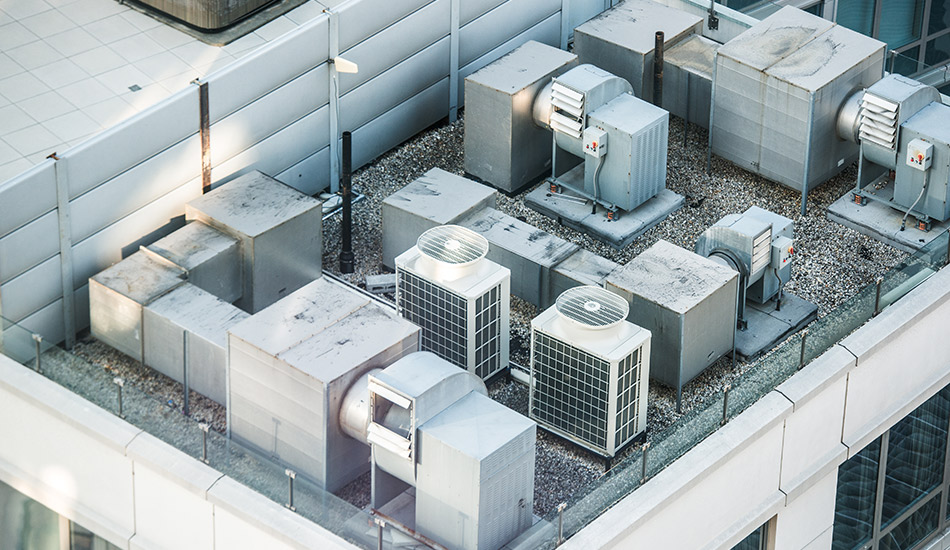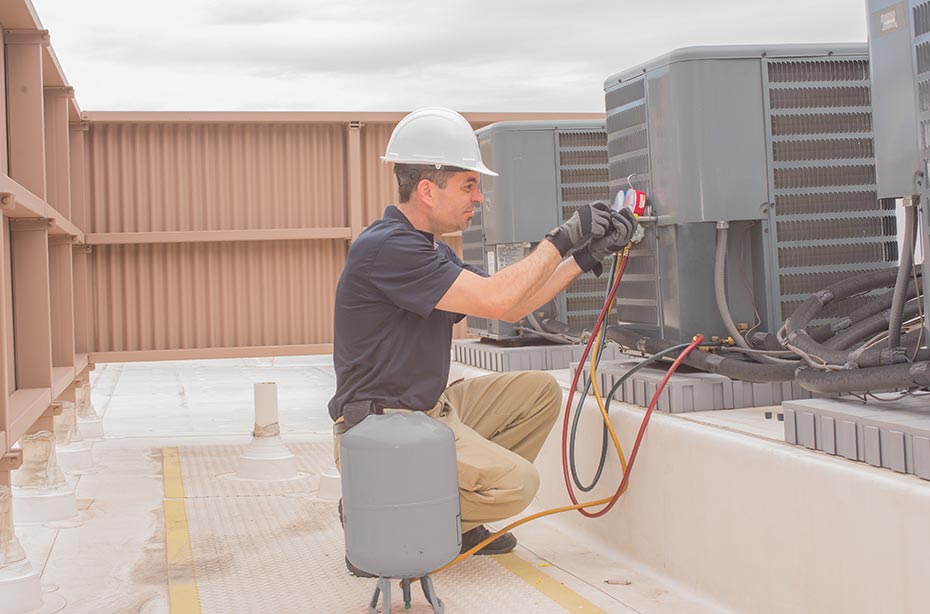How a Heat Pump and Heater Collaborate to Enhance Your Home's Home heating Performance
Comprehending just how a warmth pump and heating system collaborate is vital for property owners seeking efficient home heating options. Each system has its strengths, supplying a well balanced approach to home convenience. The heatpump succeeds in moderate temperatures, while the heater delivers quick heat during extreme cold. This harmony not only lowers energy costs yet additionally boosts the life-span of both devices. What variables influence this cooperation, and just how can homeowners maximize their advantages?
Understanding Heat Pumps: How They Function
Although many individuals might be not familiar with their internal functions, warmth pumps play a vital role in contemporary home heating systems. These gadgets run by transferring warmth from one place to an additional, making use of the principles of thermodynamics. In cooler months, a heatpump extracts warm from the outdoors air, ground, or water, and transfers it inside your home to warm up the space. On the other hand, throughout warmer months, it can turn around the procedure, serving as an air conditioning unit by eliminating warmth from inside to the outside.Heat pumps contain an evaporator, compressor, condenser, and growth shutoff. The cooling agent within the system absorbs warm as it vaporizes at low temperature levels and pressures. The compressor after that raises the pressure and temperature of the cooling agent, enabling it to launch warmth as it condenses. This efficient procedure can greatly lower power usage contrasted to traditional home heating methods, making heat pumps a lasting choice for environment control in homes.
The Function of Heaters in Home Heating
Furnaces play a vital role in home heating by giving a trustworthy resource of heat during the colder months. They operate by generating warm with burning or electric resistance, dispersing it throughout the home by means of air ducts or glowing systems. The effectiveness of a furnace is commonly measured by its Yearly Fuel Use Efficiency (AFUE) ranking, which shows how efficiently the system converts gas right into heat.Furnaces can make use of numerous power resources, consisting of natural gas, gas, oil, or electrical power, allowing homeowners to select the most suitable alternative for their requirements. Unlike warm pumps, which may battle in extreme cold, furnaces preserve consistent efficiency, ensuring that indoor temperatures continue to be comfy despite exterior problems. Furthermore, contemporary heating systems commonly come outfitted with advanced innovation, such as variable-speed blowers and clever thermostats, enhancing their performance and responsiveness. This flexibility makes heating systems an important part in all-encompassing home heating approaches.

Benefits of Utilizing Both Systems Together
Combining the strengths of both heaters and heatpump can lead to a much more effective and reliable home heating option. Using both systems permits property owners to take advantage of the heat pump's energy performance throughout milder temperatures while counting on the furnace for more extreme cold problems. This dual approach can significantly reduce power costs, as warmth pumps consume less electricity than traditional heating techniques when temperatures are moderate.Additionally, making use of both systems together can improve comfort levels in the home. Heatpump can provide constant, also home heating, while furnaces can rapidly increase ambient temperatures when required. Furthermore, the integration of both systems can prolong the life-span of devices by minimizing deterioration on each system, as they share the workload. Inevitably, house owners can appreciate a well balanced, cost-effective heating remedy that changes seamlessly to differing climate condition, making certain a cozy and inviting home throughout the winter months.
How Warm Pumps and Furnaces Enhance Each Various Other
When homeowners incorporate heatpump and furnaces, they produce a corresponding furnace that maximizes effectiveness and comfort. Warmth pumps run by transferring heat from the outdoors air or ground, making them extremely efficient in moderate environments. They stand out throughout milder temperature levels, offering cost-effective home heating. Alternatively, heating systems create heat via combustion or electrical resistance, supplying solid, instant warmth throughout severe chilly conditions.The combination of these two systems allows for dynamic adjustments based upon temperature level variations. Throughout warmer months or milder winter days, the heatpump can take the lead, saving energy and lowering prices. As temperatures drop, the furnace can effortlessly involve, making sure consistent heat throughout the home. This harmony not just optimizes energy use yet also boosts the life-span of both systems, as each device runs within its perfect efficiency variety. With each other, they view create a balanced environment that adjusts to differing climate needs.
Optimizing Performance: Tips for Homeowners
Home owners can improve their home heating effectiveness via several functional methods. Developing a normal maintenance schedule, incorporating clever thermostat modern technology, and executing reliable insulation and sealing remedies are essential steps. These steps not just boost convenience but also reduce energy expenses.
Regular Maintenance Arrange
To guarantee maximum heating efficiency, establishing a routine upkeep schedule is necessary for any home. Homeowners ought to focus on routine examinations of both heatpump and furnaces to identify peak performance. This includes transforming air filters every one to three months, as blocked filters can significantly reduce efficiency. Furthermore, scheduling expert maintenance at the very least annually allows service technicians to recognize and deal with click prospective concerns before they escalate. Home owners should also cleanse the heatpump's outside system to protect against debris build-up that can impede air movement. By adhering to a regular upkeep timetable, homeowners not only improve their heating systems' effectiveness yet also extend their lifespan, resulting in better convenience and minimized energy costs throughout the cooler months.
Smart Thermostat Integration
Incorporating a clever thermostat into a home heater can substantially boost power effectiveness, especially as it enables exact control over temperature settings. These devices can find out the house owner's timetable and choices, automatically changing the temperature level to optimize comfort while minimizing power use. For instance, they can lower home heating during times when the home is empty, reducing unneeded consumption. Several wise thermostats also give real-time energy usage data, making it possible for house owners to make informed decisions about their heating habits. Furthermore, remote access via smart device apps enables users to change settings from anywhere, making sure the home is cozy upon return. Generally, clever thermostat assimilation not only enhances convenience yet significantly adds to energy financial savings and efficiency.
Insulation and Securing Solutions
Smart thermostats play a critical role in power performance, but their performance can be significantly improved by correct insulation and securing options. Property owners need to focus on protecting wall surfaces, attic rooms, and floorings to reduce warmth loss. Premium insulation products, why not try this out such as spray foam or fiberglass, can substantially improve thermal resistance. Furthermore, securing voids around ducts, windows, and doors protects against cool air seepage and warm escape. Weatherstripping and caulking work methods for dealing with these leaks - ductless mini splits. Normal inspections for air leakages, in addition to making use of blower door tests, can help identify problem areas. By buying insulation and sealing, house owners can enhance the efficiency of their home heating systems, eventually causing minimized energy intake and reduced energy expenses
Typical Misconceptions Concerning Warm Pumps and Furnaces
What misconceptions surround heatpump and heating systems? Numerous individuals mistakenly think that warm pumps are inefficient in cooler climates. In truth, contemporary warm pumps are designed to run efficiently even in reduced temperatures, providing dependable home heating throughout wintertime. One more usual myth is that heaters are constantly a lot more effective than heatpump. This depends on the certain energy resources and performance ratings of the devices in question. Some might likewise think that utilizing both systems at the same time is unnecessary, however as a matter of fact, this combination can enhance heating effectiveness, specifically throughout severe weather. In addition, people often presume that warm pumps need continuous maintenance, when actually, they have comparable maintenance requires to standard heater. By unmasking these myths, house owners can make more educated decisions concerning their heating options, eventually resulting in enhanced comfort and energy performance in their homes.
Upkeep Considerations for Combined Solutions

Regularly Asked Questions
Can Warmth Pumps Work Successfully in Incredibly Cold Climates?
Heat pumps can battle in extremely chilly environments due to reduced performance and warm extraction constraints. Improvements in technology have led to models developed for better performance in such conditions, improving their stability in harsh atmospheres.
For How Long Do Warmth Pumps and Furnaces Typically Last?
Heatpump normally last 15 to two decades, while heating systems have a life expectancy of 15 to thirty years. Routine maintenance can expand their longevity, guaranteeing efficient operation and reducing the need for premature replacements.

What Is the Average Price of Installing Both Solutions?
The ordinary cost of mounting both a heatpump and a heating system normally ranges between $5,000 to $10,000 - heat pump service. Variables affecting this cost consist of system size, installment complexity, and regional labor rates
Exist Tax Obligation Incentives for Utilizing Energy-Efficient Home Heating Systems?
Numerous homeowners make inquiries regarding tax obligation motivations for energy-efficient home heating systems. Different government and state programs often provide rebates or credit scores, motivating the adoption of sustainable innovations to minimize energy intake and promote environmental responsibility.
Just how Do I Pick the Right Size Heat Pump and Heating System?
Picking the right size heatpump and heating system includes determining the home's square footage, considering insulation quality, and examining neighborhood environment. Consulting a specialist can guarantee optimal system efficiency and energy efficiency based on specific needs. heat pump service. Understanding how a warmth pump and heating system work with each other is necessary for homeowners looking for efficient home heating services. In colder months, a heat pump essences warm from the outdoors air, ground, or water, and transfers it inside your home to warm up the living room. When home owners incorporate warm pumps and furnaces, they develop a corresponding home heating system that optimizes effectiveness and comfort. Warmth pumps run by transferring heat from the outdoors air or ground, making them highly efficient in modest environments. Warmth pumps can struggle in exceptionally cool environments due to decreased effectiveness and warmth extraction restrictions